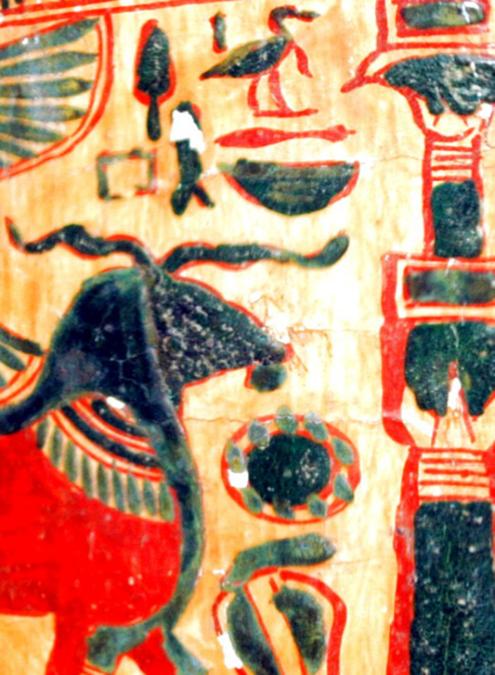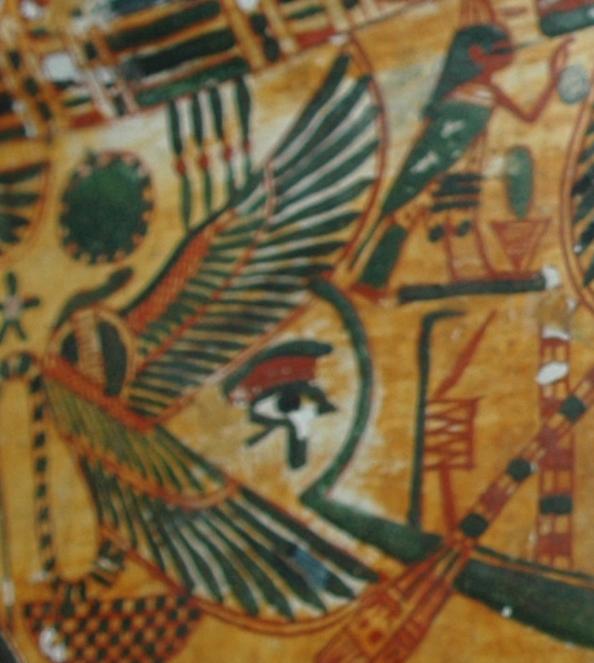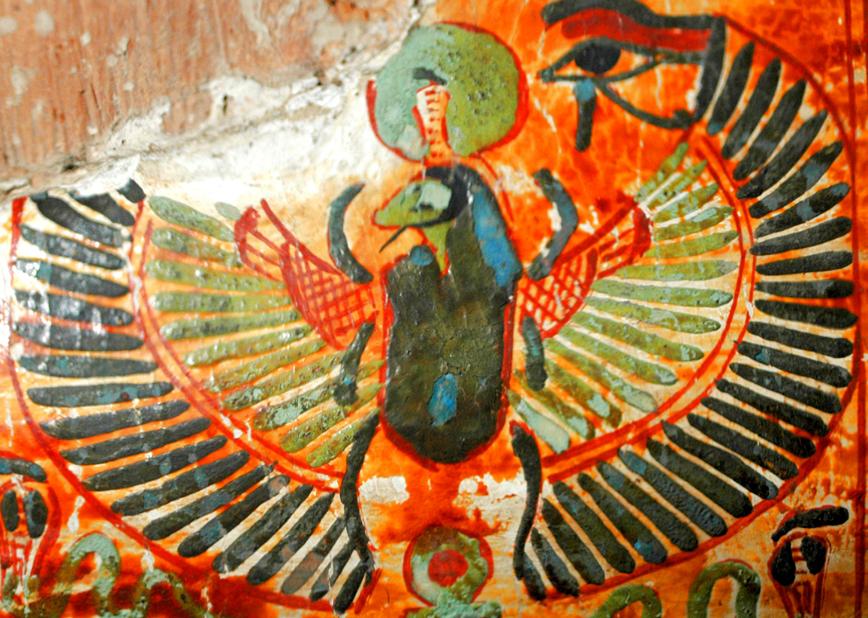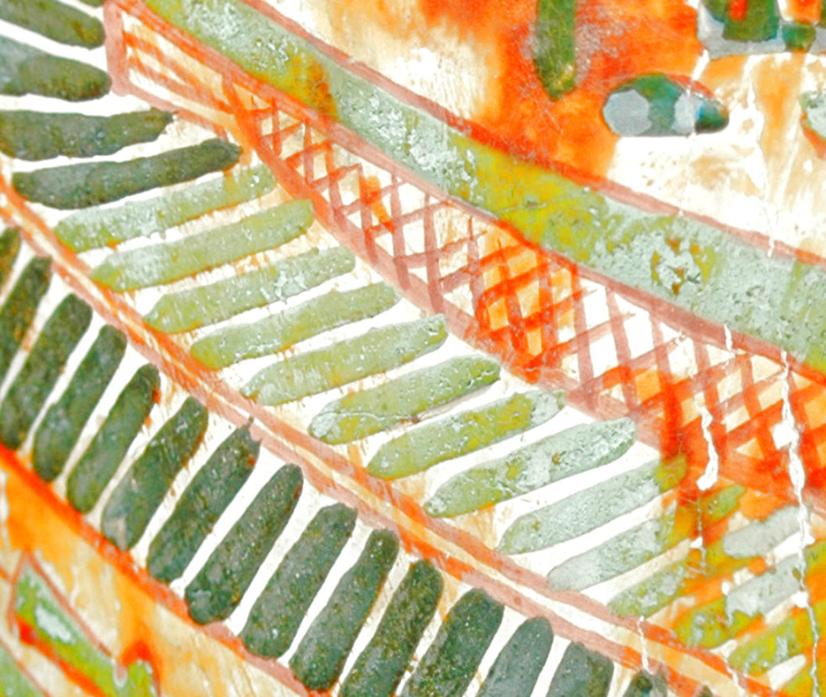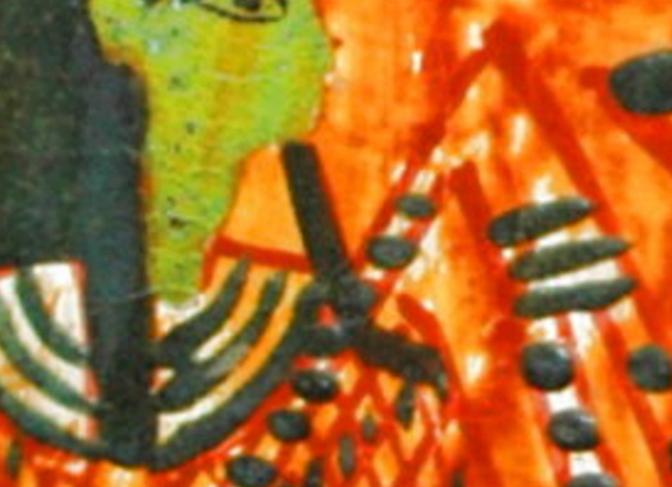| Russian Academy of Sciences Centre for Egyptological Studies, Moscow (CESRAS) & Russian Institute of Egyptology in Cairo (RIEC) Research on the Funerary Art of the 21a Theban Dynasty of Payanch and Personages of that Period (1070-945 BCE) Site Directory Personages Artifacts Iconography Deities Royal Cache TT320 Network Index |
Intellectual property of the Russian Academy of Sciences, Centre for Egyptological Studies, Moscow R.F. This material may be freely used for non-commercial, educational,
and public services applications. If you use our material, please give a credit to CESRAS, Moscow, and make a link to http://www.cesras.org. You may contact us by email:
admin@cesras.org and we would be happy to help you in any way we can. Thanks for your visit to this site and please do come again. There will always be something new!
and public services applications. If you use our material, please give a credit to CESRAS, Moscow, and make a link to http://www.cesras.org. You may contact us by email:
admin@cesras.org and we would be happy to help you in any way we can. Thanks for your visit to this site and please do come again. There will always be something new!
ACHIEVEMENTS AND PROBLEMS OF MODERN EGYPTOLOGY
Proceedings of the International Conference held in Moscow on September 29-October 2, 2009
Edited by Galina A. Belova
Digital photographic addenda to the paper THEY WERE NOT YELLOW, 21st (21a) Theban Dynasty
Edward R. Loring
Proceedings of the International Conference held in Moscow on September 29-October 2, 2009
Edited by Galina A. Belova
Digital photographic addenda to the paper THEY WERE NOT YELLOW, 21st (21a) Theban Dynasty
Edward R. Loring
Next page (click)
Cairo, CG61032 Tayuheret, Chantress of Amun, presumed wife of HPA Masaharta:
coffins usurped from Hati, Chantress of Amun
Nothing can be said about this lady. She may have been the mother of Asetemachbjt B (Isetemheb B). That's all.
She died during the pontificate of her paternal half-brother Mencheperraw second son of "king" Chacheperraw
Paynedjem I. Although her supposed husband, Masaharta, was a High Priest of Amun, he lived his short pontificate
(1055-1046) in the shadow of his "royal" father who outlived him by some ten years (died 1036). Tayuheret's mummy
shows an unattractive woman with Nubian traits. Masaharta's shows an extremely obese middle-aged man.
The clear photo at left shows that the highly unprofessional varnisher simply almost missed the area next to the pillar.
Still, the image presents some problems: the pillar has turned black, but there is very little varnish near it. The
background is clearly white. Cobras, heads and side fields are almost always blue. Here we see that the head has
already turned green and the sides are in the process of doing so. Most of the fur (fur & hair, wigs are blue) of the ram is
going through the changes from blue to green to black. We must not forget that there were no exact standards for
varnish or other inorganic chemical products in D21a.
The poor picture at right shows us the original white background in the lower strips between feathers. This brings us to a
very important matter which, to the best of my knowledge, has not been studied or even mentioned. The surface to be
painted was not two dimensional, not even if we discard the generally curved lines of a coffin and see it as the flat
graphic of a photograph. If we start with the raised feathers and depths between them, it must become clear to us that
we are dealing with three dimensions. The feathers are only a starting place. We also have scarabs, faces, figures etc. I
have made a close study of raised decorative elements such as these. The material used is generally finely ground
faience mixed with a stiff binder to form a plastic claylike substance which can be formed, pressed, or cut as the user
wishes, which can be applied, or better said, bonded to a surface where it hardens, becoming one with the surface. It is
not just something that the painter sticks on. It has nothing to do with the painter. It is a highly refined, demanding craft
on its own. It requires well trained, professional craftsmen.
coffins usurped from Hati, Chantress of Amun
Nothing can be said about this lady. She may have been the mother of Asetemachbjt B (Isetemheb B). That's all.
She died during the pontificate of her paternal half-brother Mencheperraw second son of "king" Chacheperraw
Paynedjem I. Although her supposed husband, Masaharta, was a High Priest of Amun, he lived his short pontificate
(1055-1046) in the shadow of his "royal" father who outlived him by some ten years (died 1036). Tayuheret's mummy
shows an unattractive woman with Nubian traits. Masaharta's shows an extremely obese middle-aged man.
The clear photo at left shows that the highly unprofessional varnisher simply almost missed the area next to the pillar.
Still, the image presents some problems: the pillar has turned black, but there is very little varnish near it. The
background is clearly white. Cobras, heads and side fields are almost always blue. Here we see that the head has
already turned green and the sides are in the process of doing so. Most of the fur (fur & hair, wigs are blue) of the ram is
going through the changes from blue to green to black. We must not forget that there were no exact standards for
varnish or other inorganic chemical products in D21a.
The poor picture at right shows us the original white background in the lower strips between feathers. This brings us to a
very important matter which, to the best of my knowledge, has not been studied or even mentioned. The surface to be
painted was not two dimensional, not even if we discard the generally curved lines of a coffin and see it as the flat
graphic of a photograph. If we start with the raised feathers and depths between them, it must become clear to us that
we are dealing with three dimensions. The feathers are only a starting place. We also have scarabs, faces, figures etc. I
have made a close study of raised decorative elements such as these. The material used is generally finely ground
faience mixed with a stiff binder to form a plastic claylike substance which can be formed, pressed, or cut as the user
wishes, which can be applied, or better said, bonded to a surface where it hardens, becoming one with the surface. It is
not just something that the painter sticks on. It has nothing to do with the painter. It is a highly refined, demanding craft
on its own. It requires well trained, professional craftsmen.
The following four images are from the coffins, Cairo CG61028, of The God's Wife
of Amun, Maatkaraw, daughter of Pinodjem I and Henuttauy and sister of HPA
Mencheperraw. We have no dates for her and know only that she died during her
brother's pontificate and was buried in coffins of the highest quality in a place
unknown. As most others of the period her burial was plundered. The hands of her
mummy were broken off. Buried with her was the mummy of her pet monkey,
initially suspected to have been her child.
Although her title as God's Wife of Amun, was the highest real female title (the
long list of high titles of a HPA's wife were of purely formal nature), she was in
such a strong position that she could adorn herself with royal symbols. She wrote
her name in a royal cartouche and adorned her head-dress with the golden royal
cobra. Even her uschebtis show this decoration.
After Masaharta's death in 1046, her brother Mencheperraw became HPA whose
pontificate lasted fifty years (died 996). Considering that the average male lifetime
was 35-40 years, he must have been a child when he became HPA. Therefore I am
inclined to believe that his sister, Maatkaraw, was older and gained the real power.
No remains of Mencheperraw or his wife Asetemachbjt C (Isetemcheb), a
daughter of the "official" king in Tanis, have been found.
of Amun, Maatkaraw, daughter of Pinodjem I and Henuttauy and sister of HPA
Mencheperraw. We have no dates for her and know only that she died during her
brother's pontificate and was buried in coffins of the highest quality in a place
unknown. As most others of the period her burial was plundered. The hands of her
mummy were broken off. Buried with her was the mummy of her pet monkey,
initially suspected to have been her child.
Although her title as God's Wife of Amun, was the highest real female title (the
long list of high titles of a HPA's wife were of purely formal nature), she was in
such a strong position that she could adorn herself with royal symbols. She wrote
her name in a royal cartouche and adorned her head-dress with the golden royal
cobra. Even her uschebtis show this decoration.
After Masaharta's death in 1046, her brother Mencheperraw became HPA whose
pontificate lasted fifty years (died 996). Considering that the average male lifetime
was 35-40 years, he must have been a child when he became HPA. Therefore I am
inclined to believe that his sister, Maatkaraw, was older and gained the real power.
No remains of Mencheperraw or his wife Asetemachbjt C (Isetemcheb), a
daughter of the "official" king in Tanis, have been found.
Cairo CG61028 Maatkaraw D21a TT320: outer coffin, tub, left side.
Here we see clear white between the feathers. Some of the discolouring varnished surface has
broken off, reviling a portion of the (badly soiled) Egyptian Blue, the original colour of all dark
elements. At upper left vestiges of white gesso directly on clean wood show that "mud" was not
used on a coffin of this class. The large white area of abrasion from wood to surface painting must
be seen as a cross-section of the surface materials. It shows absolutely no trace of a yellow
background.
Here we see clear white between the feathers. Some of the discolouring varnished surface has
broken off, reviling a portion of the (badly soiled) Egyptian Blue, the original colour of all dark
elements. At upper left vestiges of white gesso directly on clean wood show that "mud" was not
used on a coffin of this class. The large white area of abrasion from wood to surface painting must
be seen as a cross-section of the surface materials. It shows absolutely no trace of a yellow
background.
Cairo CG61028 Maatkaraw D21a TT320: inner coffin, lid, left side.
A clear case showing where the varnisher's crude brush did not reach the
white background between raised elements.
A clear case showing where the varnisher's crude brush did not reach the
white background between raised elements.
Cairo CG61028 Maatkaraw D21a TT320: outer coffin, tub, left side.
...no need to comment...
...no need to comment...
Here we have a serious break in our chronology of D21a coffins from TT320. As said
above, no traces of the important HPA Mencheperraw or his royal wife Asetemachbjt C
have been found. They were followed by the eldest son, HPA Smendes II, a rather
shadowy figure in history whose remains have not been found. None the less he was the
father of a certain Nesychonsu who became the favorite wife of her uncle Pinodjem II and
for whom the "Royal Cache" TT320 was created.
above, no traces of the important HPA Mencheperraw or his royal wife Asetemachbjt C
have been found. They were followed by the eldest son, HPA Smendes II, a rather
shadowy figure in history whose remains have not been found. None the less he was the
father of a certain Nesychonsu who became the favorite wife of her uncle Pinodjem II and
for whom the "Royal Cache" TT320 was created.
